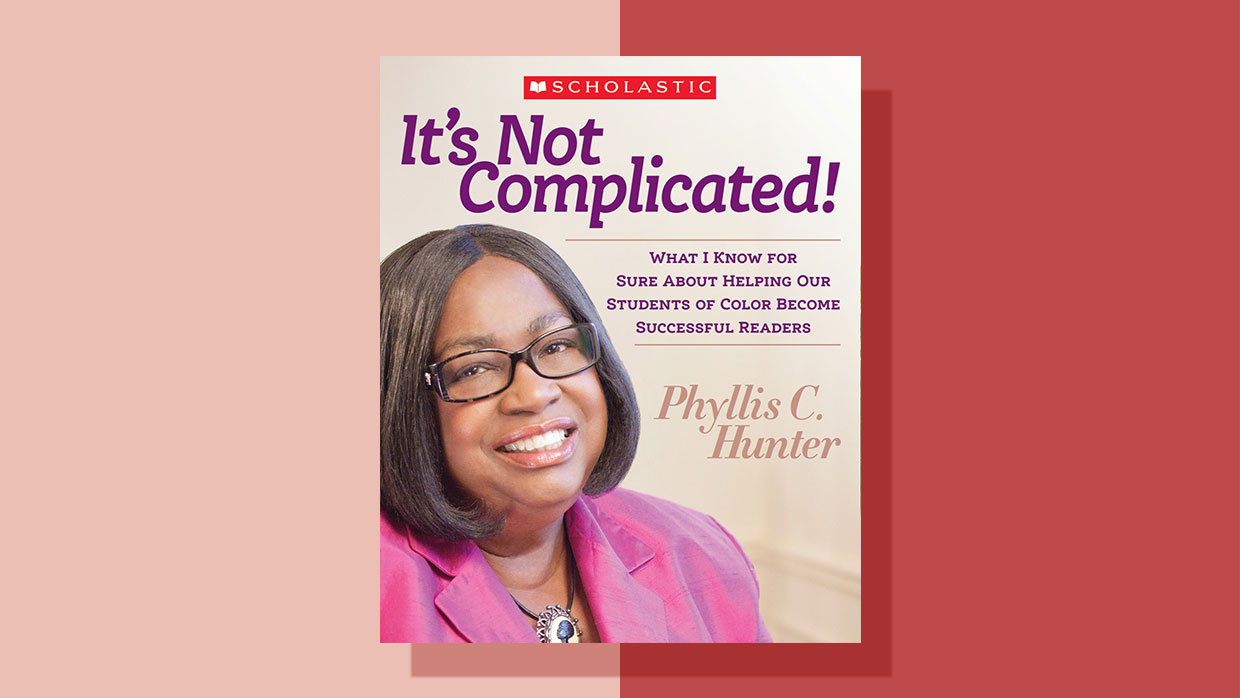How to Help Students of Color Succeed as Readers
Unfortunately, in today’s world, reading doesn’t always work out for our students of color—for a series of complex reasons, including the challenges of poverty and learned helplessness. However, I know and have taught many successful black students. Indeed, as my Dartmouth- and Georgetown-trained doctor son would remind me, not all students of color are failing.
My book, It’s Not Complicated! What I Know For Sure About Helping Our Students of Color Become Successful Readers, explains how we can help our students of color, who often face uniquely difficult challenges, believe in themselves as creative, competent, successful readers, writers, and learners. And it’s about us, the teachers, administrators, parents, and all who care about our students of color and work so hard to help them succeed. Together, we all face tough challenges. And together, as we explore the research, embrace the standards, and work hard to provide the very best support both at home and at school, we can overcome.
We face real challenges, but they are not insurmountable. We just need to be smart and strategic about how we direct our energy. These 12 points for helping our students of color succeed as readers will help you generate a powerful and effective plan of action to harness and direct your teacher energy. This is what I know for sure, after more than 40 years on the front lines:
- Our kids need support to become successful readers.
- When our kids are motivated to read, it can change their lives.
- Our kids need access to more books.
- Around-the-clock oral language and bedtime stories can prevent the 30-million-word gap.
- Academic vocabulary and avid reading give our kids a brain boost.
- What happens to our kids in kindergarten through third grade can change their lives.
- Our kids are not reading if they aren’t comprehending.
- Response to intervention breaks the cycle of failure.
- Knowing how to navigate nonfiction is a survival skill.
- We must support families of color. Parents, grandparents, and caregivers are their child’s first teacher.
- Helping our kids means being smart about the use of data.
- We must help all kids of color believe they will go to college.
When our kids read their hearts out, the so-called achievement gap all but disappears. Both white students and students of color perform off the charts when they’ve got hours and hours or avid reading backing them up. Never forget: Good won’t do when great is possible. Reading is our kids’ civil right.
To learn more about It’s Not Complicated! What I Know For Sure About Helping Our Students of Color Become Successful Readers, you can purchase the book here.
About the author:
Phyllis C. Hunter was an education advisor, consultant, professional developer, and partner to Scholastic. As an educator, she held various positions including education advisor to the President of the United States, George W. Bush; Reading Manager under former U.S. Secretary of Education Rod Paige; an elementary school principal; middle school assistant principal; 4th grade teacher; State of California mentor teacher; and speech and language therapist. As a partner and friend to Scholastic, her legacy continues to live on in her professional resources. Her classic It’s Not Complicated! and The Phyllis C. Hunter Classroom Library, now in its second edition, remain Scholastic best sellers.
